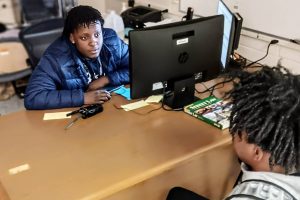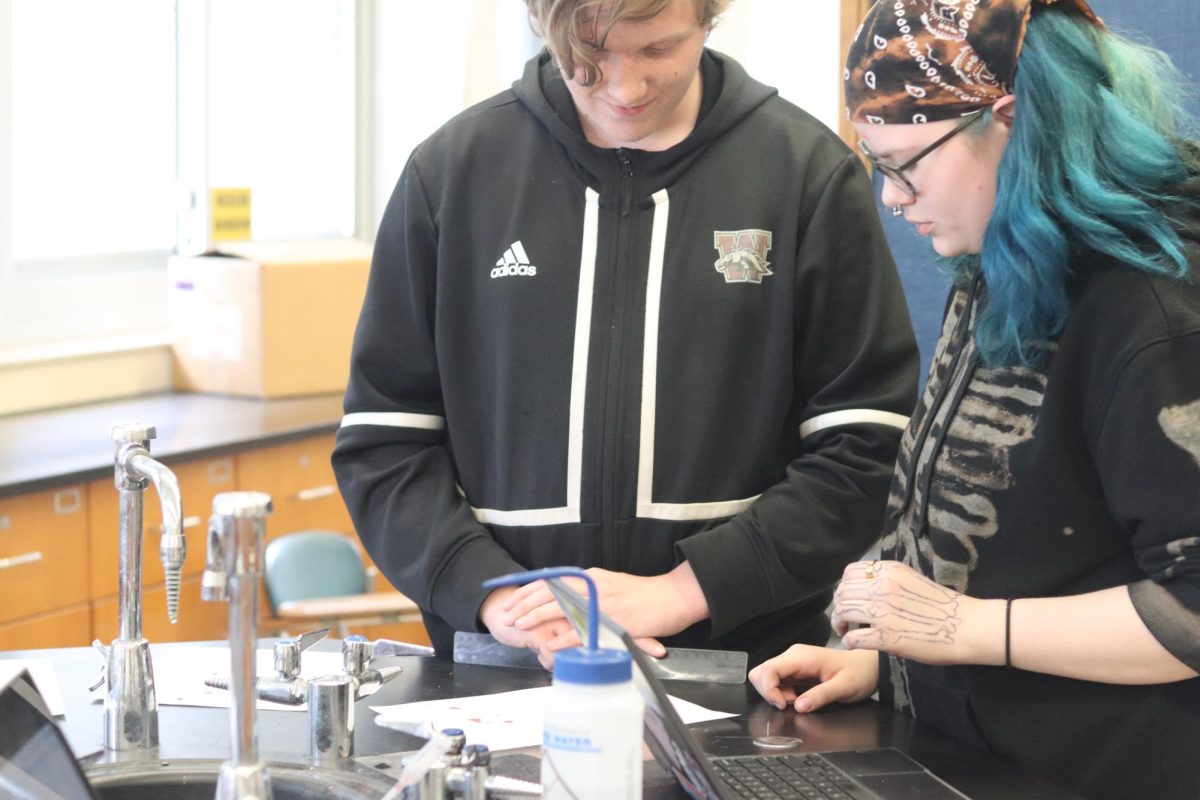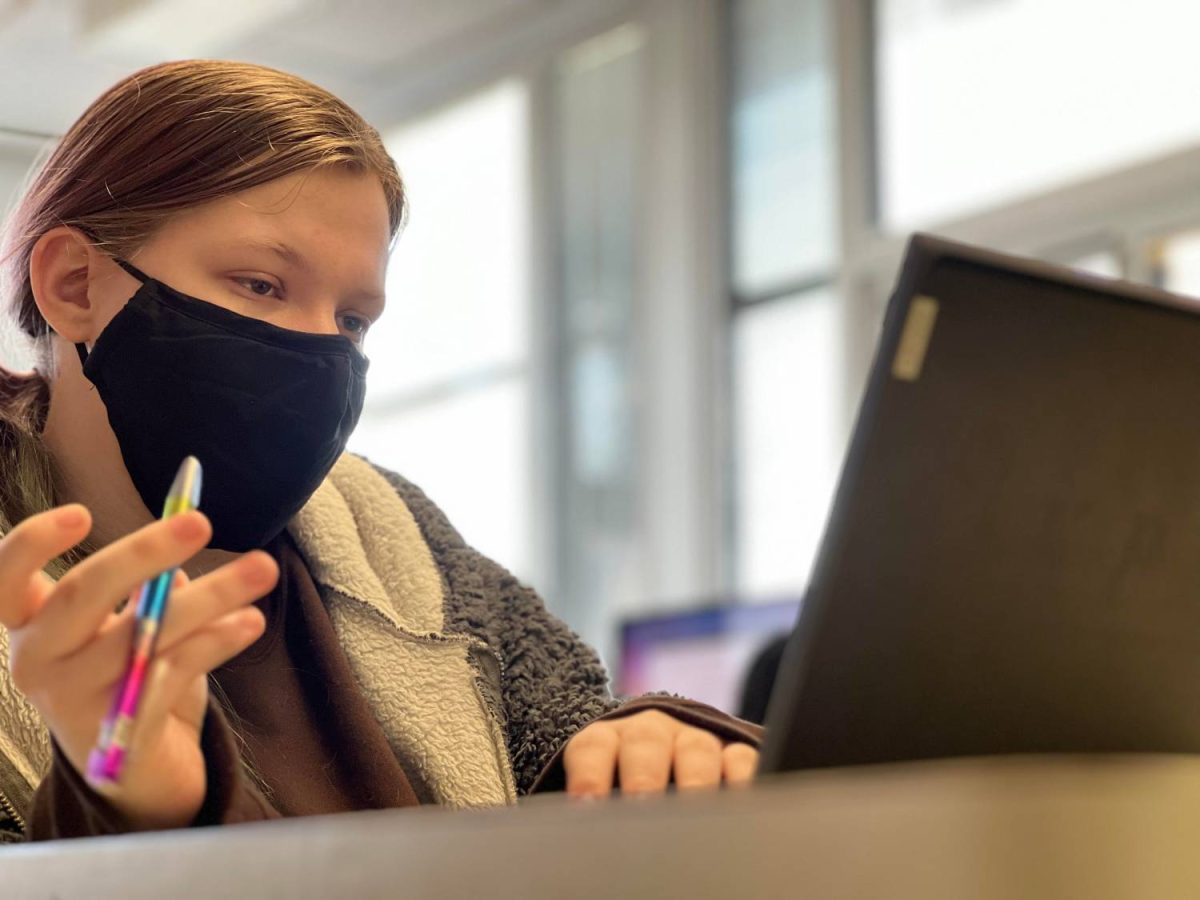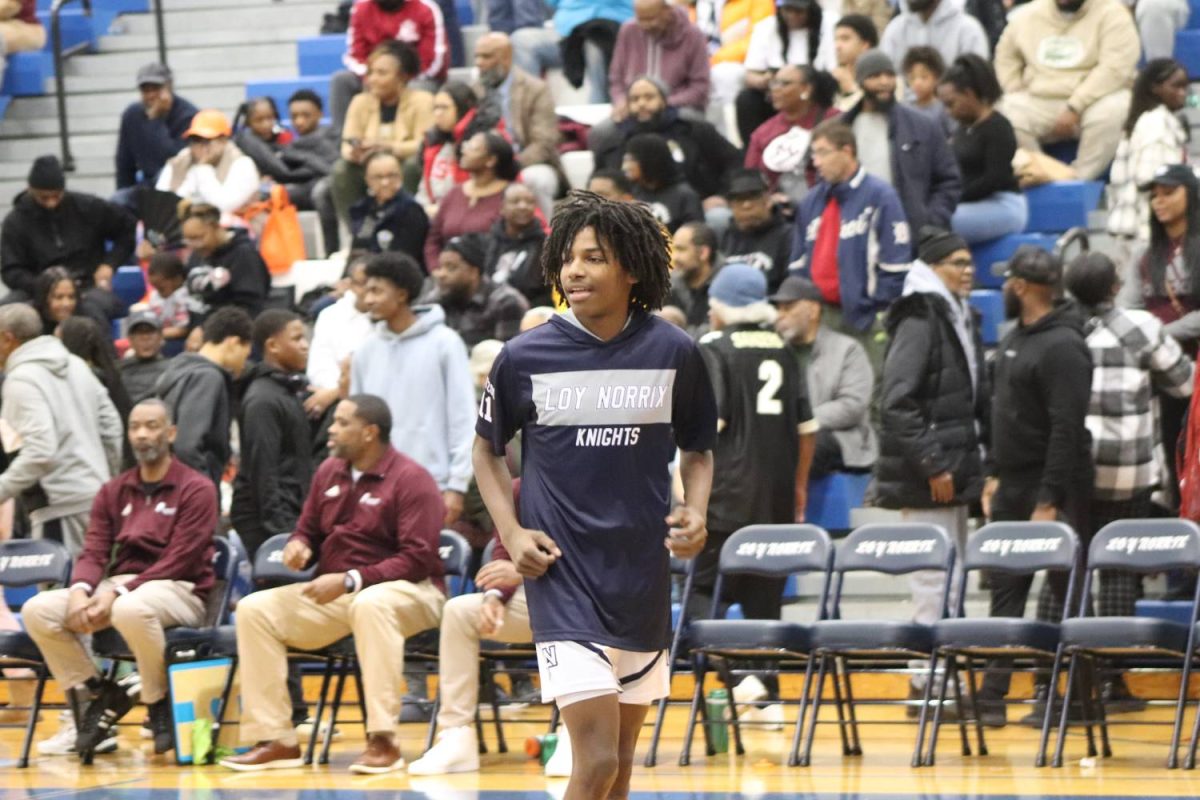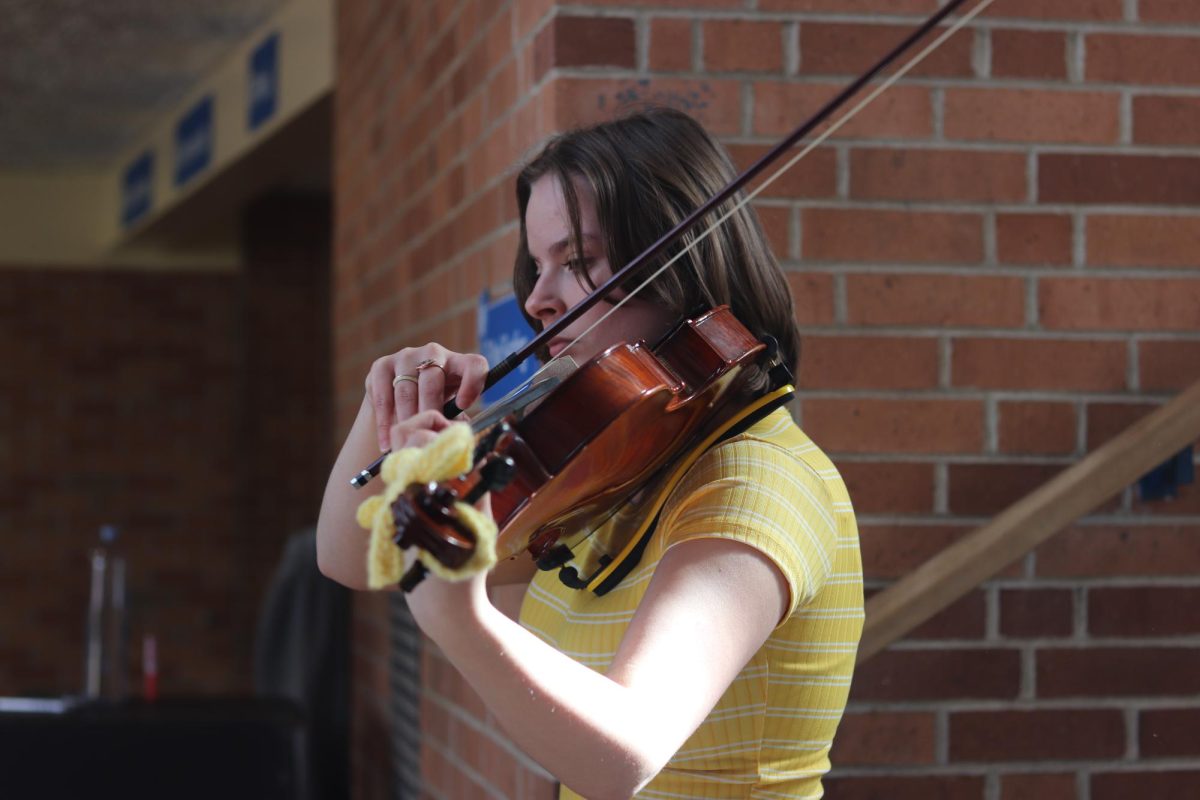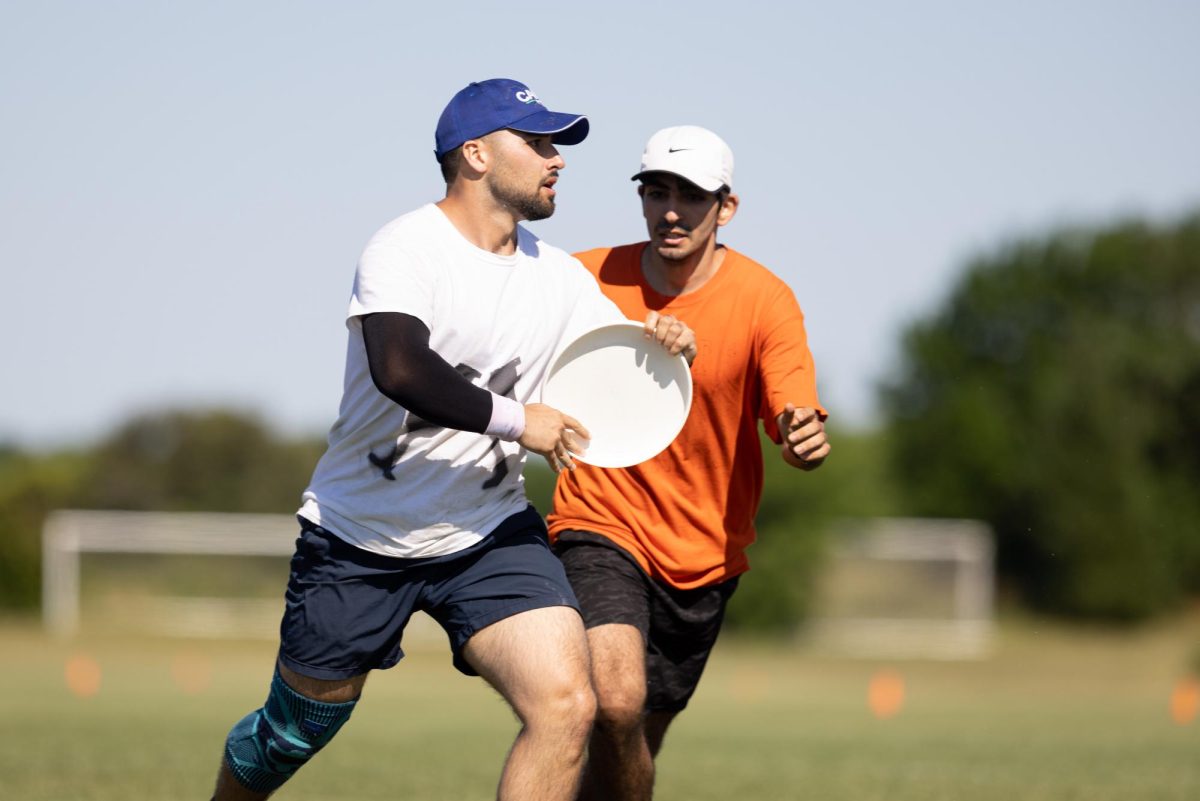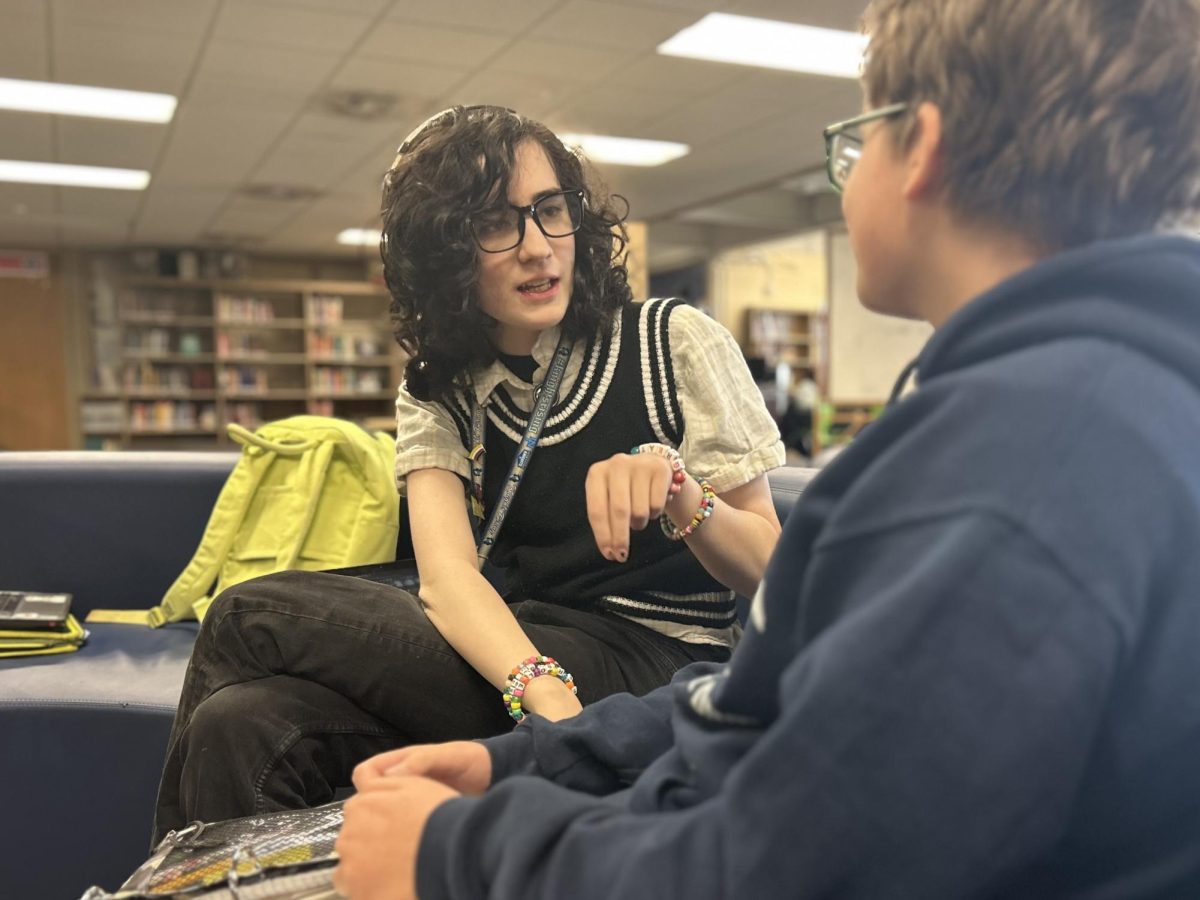Tables are organized in a circle and nurses are in the center preparing for the incoming crowd of students. The students wait to donate a pint of blood which can save up to three lives. Every year in the middle of April, Loy Norrix High School hosts a blood drive in the gym in order to donate blood for those in need.
The school’s National Honor Society hosts the event ensuring that students donate at their scheduled times and are given an adequate amount of food and rest in order to go about the rest of their day.
According to the Red Cross, “Every two seconds a person in the U.S. is in need of a blood transfusion, whether it be directly or for surgery.” When in surgery a person may need blood in order to replace the amount they lost and other times may just need a blood transfusion directly in order to cleanse the blood in case of kidney failure.
“It’s really gratifying that I’m able to donate blood and save three lives with it,” said junior Myron Sykes, “It’s something that everyone should consider doing if they are able to.”
All students giving blood have to go through a step-by-step process in order to participate. It is recommended that students are 17 or older. Student’s that are 16 years old must have parent consent before they can participate. First, students must sign in and read a packet that explains the risks and benefits of donating blood and plasma. Students then need to answer questions regarding their eligibility to contribute, such as their weight, any illnesses they have or may have had and whether or not they have traveled out of the country in the last year or so. Afterwards, students must get their iron levels tested in order to confirm it is safe enough for the donor to give blood. If all goes well, the student will be escorted to a nurse’s bed to donate their pint of blood.
“I’m really scared of needles, even the needles [nurses] use for your vaccines,” said senior Sarah Giramia.
Many students found that the finger prick used to test their iron levels hurt more than the needle used to draw blood.
“Both the finger prick and the needle hurt, but if I would have to pick, the finger prick hurt a bit more,” said junior Mikayla Stover.
After students give blood and have a little time to lay on the bed, they are allowed to go to the catering table and eat food. They then must stay seated for at least 15 minutes before trying to do any strenuous activities.
“A perk that comes with giving blood is that you get free food,” said senior Kate Puca.
If a student doesn’t rest for the amount of time or eat enough food after donating blood, a student might feel nauseous and dizzy where they might pass out and need a moment to lay down.
“After I ate food and rested, I began to feel very nauseous and dizzy,” said senior Brooke Washington. “The nurse had to come and take me to a separate bed to lay on. I ended up staying down at the blood drive for about two and a half hours after I gave blood.”
Students may have a sense of fear and anxiety before they donate their blood. Even though they’re scared there is an underlying feeling of gratitude and pride after knowing that the students are making a difference in other people’s lives.




